In today’s digital landscape, Software as a Service (SaaS) has revolutionized the way businesses operate, offering efficient solutions to streamline processes and enhance productivity. However, with an abundance of SaaS options available in the market, it’s crucial for providers to effectively showcase their offerings to potential customers. This is where SaaS demos play a pivotal role.
SaaS demos serve as the gateway for prospects to explore the features, functionalities, and benefits of a software solution firsthand. They provide an opportunity for providers to demonstrate how their platform can address the unique needs and challenges of each prospect, ultimately influencing the decision-making process.
Whether you’re a SaaS provider looking to optimize your demo strategy or a business professional seeking the right software solution, this guide will equip you with the knowledge and insights needed to navigate the world of SaaS demos with confidence.
Why do SaaS Demos Matter?
Live video demos play a pivotal role in the success of SaaS businesses, serving as a crucial tool for effectively communicating the value proposition to potential customers. These demos serve as a bridge to guide high-intent prospects toward conversion.
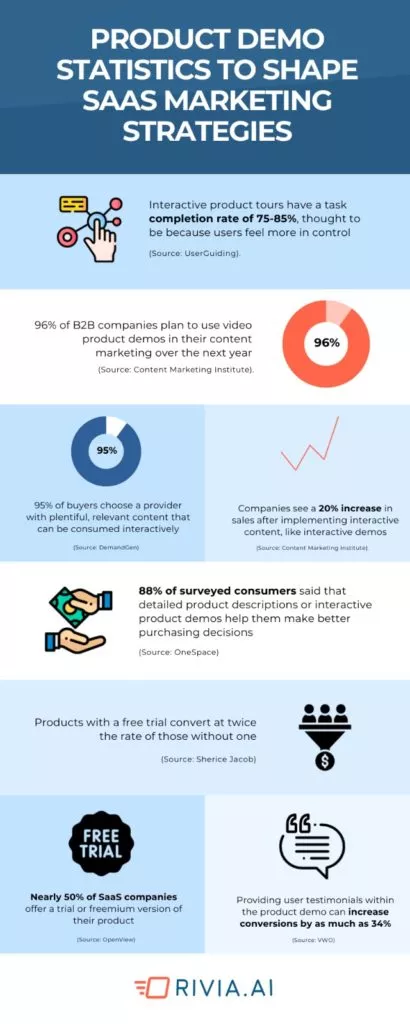
SaaS demos serve several essential functions:
- Explaining the Value Proposition: They articulate why customers should invest in the product, emphasizing its benefits and advantages.
- Showcasing Unique Selling Proposition (USP): Demonstrating what sets the product apart from competitors, highlighting its unique features and capabilities.
- Illustrating Product Functionality: Providing a hands-on demonstration of how the product works, showcasing its key features and functionalities.
- Addressing Customer Queries: Offering clarity by answering any questions or concerns raised by customers during the demo.
- Handling Objections: Effectively addressing objections and concerns that may arise, reassuring customers, and alleviating doubts.
- Discussing Pricing: Optionally present pricing information, ensure transparency, and set clear expectations.
- Establishing Next Steps: Concluding the demo by outlining the next steps in the sales process, whether it involves follow-up meetings, trials, or contract negotiations.
Strategies for SaaS Demo in Business:
1. Qualify Leads Pre-Demo
Preparing for a successful SaaS demo begins long before the actual presentation. One crucial step is to qualify leads in advance.
This responsibility may primarily fall on the marketing team, which sets up lead generation forms and demo sign-ups. However, the sales team should actively contribute by providing input on the qualifying information requested on these forms.
In many instances, gathering firmographic data proves instrumental in qualifying leads and determining whether they align with your ideal customer profile (ICP). This may include:
- The lead’s name and job title
- Company name
- Company industry
- Company size
- Company revenue
- Products the lead is most interested in
For example, Agorapulse’s SaaS demo sign-up form exemplifies this approach, capturing relevant information without overwhelming the user.
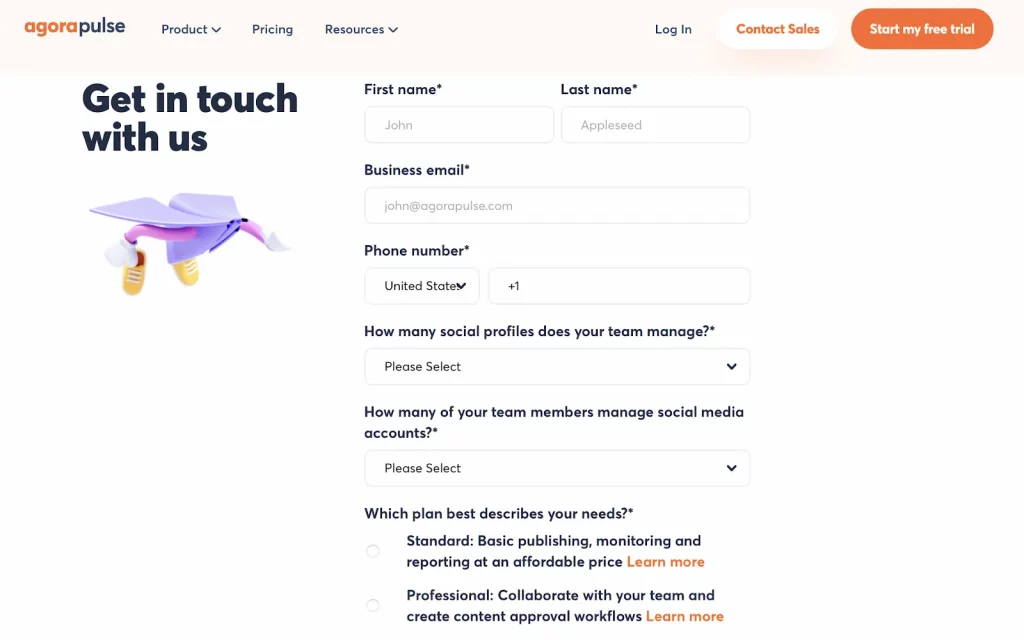
It’s crucial to balance obtaining pertinent details and avoiding excessive inquiries that may deter potential leads. Collaborative efforts between marketing and sales can help identify this “sweet spot” to gather the necessary information effectively.
2. Research Your Leads in Advance
While qualifying information sets the foundation, effective SaaS demo practices extend beyond the data provided by leads. To enhance your preparation, thoroughly research all prospects in advance, including both the company and individual participants scheduled for the demo.
Begin by examining the LinkedIn profiles of individuals, preferably in incognito mode to avoid tipping off your interest prematurely. Analyze their activity, as it may reveal discussions about tools related to specific pain points, providing valuable insights into their needs and preferences. Additionally, this research offers insights into the organizational dynamics within their company.
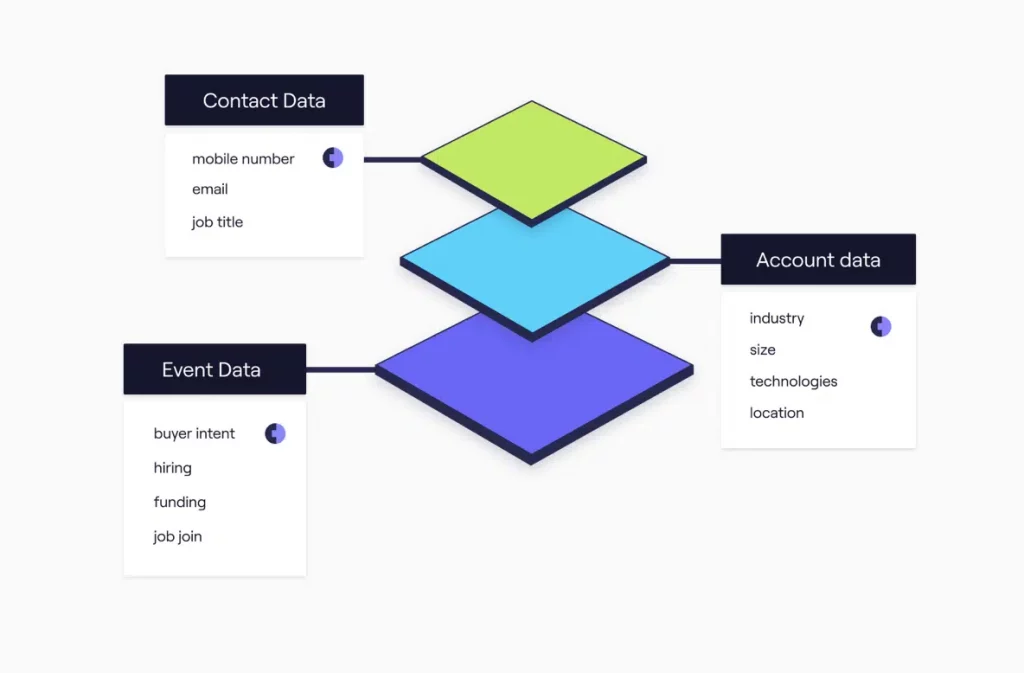
Moreover, leverage contact databases like Cognism to delve deeper into potential leads’ backgrounds. Explore factors such as their industry experience, tenure, and any recent company developments, including hiring initiatives or funding rounds. These insights serve as critical indicators of growth or buying signals that can significantly influence your demo presentation strategy.
3. Tailor SaaS Demos to Each Prospect
After investing time and effort into gathering insights about the company and individuals you’ll be meeting, it’s crucial to utilize this information during the demo preparation phase. Tailoring your presentation to each prospect enhances your chances of resonating with their specific needs and interests.
Consider the following factors when customizing your demos:
- Known Growth or Regression of a Company: Understanding the company’s trajectory, such as recent expansions or layoffs, provides context for tailoring your presentation.
- Industry: Adapt your demo to align with the unique challenges and requirements of the prospect’s industry.
- Intended Use Case of the Tool: Highlight features and functionalities that directly address the prospect’s intended use case, showcasing the tool’s relevance to their specific needs.
- Expected Pain Points: Anticipate and address potential pain points that the prospect may encounter, demonstrating how your solution can alleviate these challenges.
- Company Size: Customize your demo to cater to the scalability requirements and operational dynamics of the prospect’s company size.
4. Ask Smart “Small Talk” Questions
Initiate the demo with some initial small talk to build rapport and establish a connection with the prospect. This phase is crucial as it lays the foundation for a productive and engaging interaction. Use this opportunity strategically to gather valuable insights and fine-tune your demo approach in real-time.
Consider posing questions such as:
- “What motivated you to schedule the demo today?”
- “How did you come across our solution?”
- “What prompted your search for [insert tool type here]?”
- “How can we best support your business needs?”
Actively listen to the prospect’s responses, leveraging this information to tailor your demo content and address their specific pain points and objectives effectively.
5. Start Brief and Then Dive Into Features That Interest the Customer
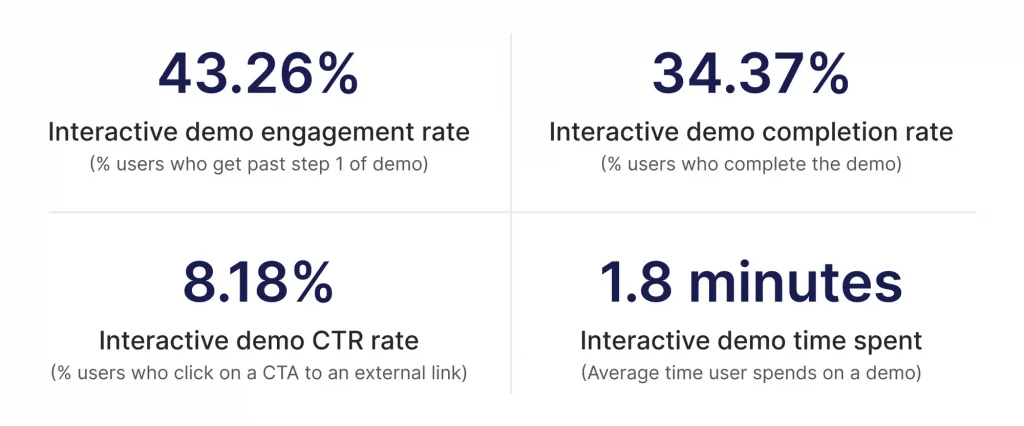
Given the limited timeframe of demos, it’s essential to manage your time efficiently to deliver a concise yet comprehensive presentation. Begin with a succinct overview of your tool, akin to an extended elevator pitch, highlighting its core functionalities and value proposition.
Subsequently, delve deeper into specific features that align with the prospect’s expressed interests and needs. Observe their reactions closely and pivot as necessary to focus on areas that resonate most with them. Signs of engagement, such as inquiries or expressions of interest, serve as cues to tailor your demo content accordingly, ensuring maximum relevance and impact.
Learn about SaaS project management tools here.
6. Explain Use Cases & Benefits, Not Just Features
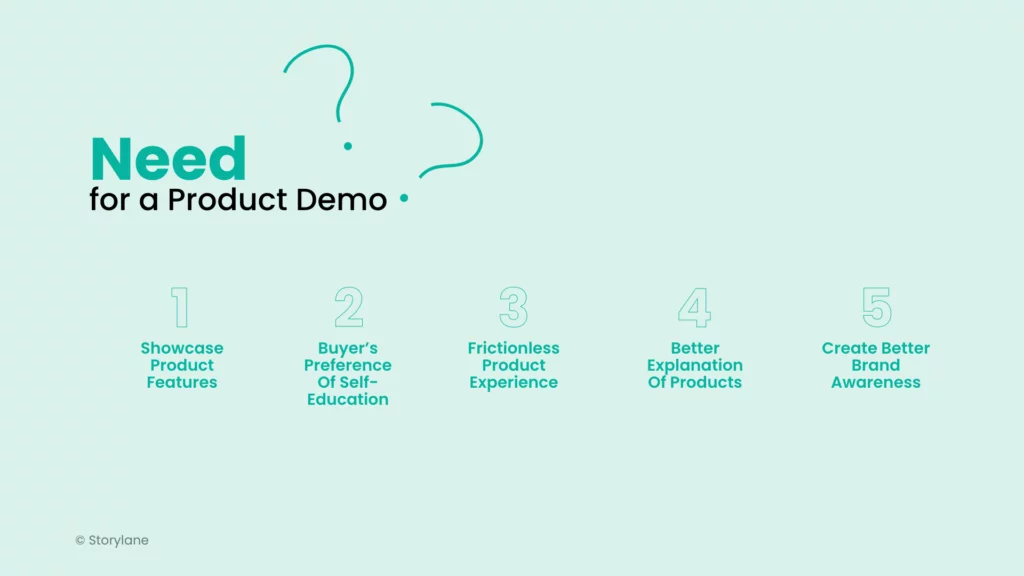
During the demo, it’s imperative to go beyond merely listing off features and instead focus on elucidating how those features translate into tangible benefits for the prospect.
For instance, if you’re pitching social media marketing software, instead of simply stating, “You can use scheduling features to facilitate ideal posting schedules,” delve deeper into the practical implications and benefits:
- By utilizing the scheduling software, you can ensure seamless execution of your social media calendar, even if a team member is unavailable or if you have peak posting times outside of regular work hours.
- Scheduling software mitigates the risk of oversight or delays, ensuring timely content publication and consistent engagement with your audience.
- It streamlines content organization based on a strategic calendar, maintaining coherence and alignment with your overarching marketing objectives.
Tailor these benefits to resonate with specific prospects based on factors such as company size, industry, and intended use case. Personalization is key to demonstrating the relevance and value of your solution to each individual prospect.
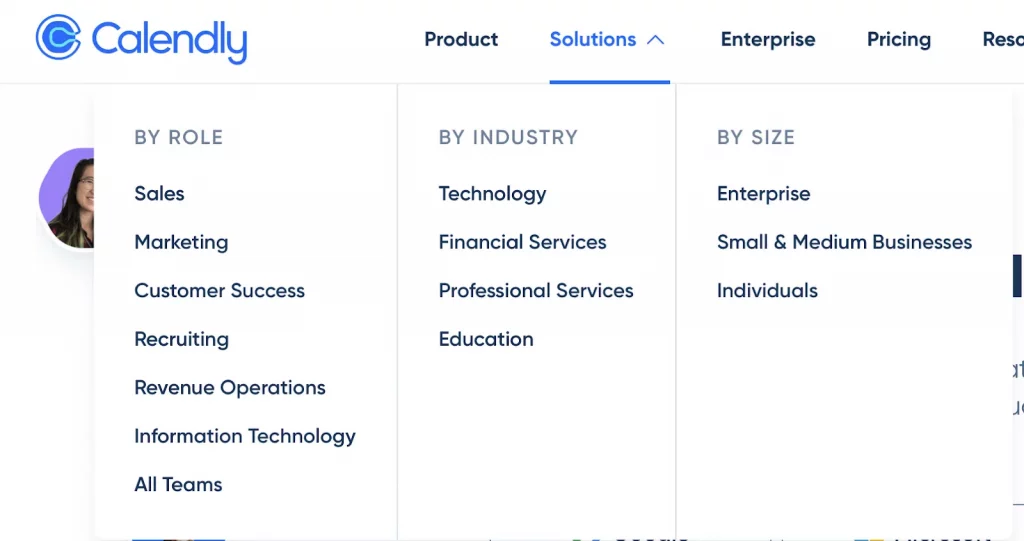
7. Keep Asking Questions
Maintain a conversational tone throughout the demo and actively engage the prospect by asking insightful questions. Avoid the temptation to deliver a one-sided monologue, as this may hinder meaningful interaction and impede the prospect’s ability to raise queries or voice objections.
Utilize questions such as:
- “What are your thoughts on this feature?”
- “Do you have any questions I can address for you?”
- “How do you envision integrating this tool into your current workflow?”
Encourage open dialogue and listen attentively to the prospect’s responses. Their feedback provides valuable insights into their needs and preferences, enabling you to tailor your presentation accordingly and address any concerns effectively.
8. Mention What Makes You Different
Leverage your in-depth knowledge of your product and brand to articulate your unique selling points throughout the demo. Highlight what sets you apart from competitors and why prospects should choose your solution over alternatives.
Integrate phrases such as:
- “We’re the only tool that offers…”
- “What makes us different is…”
- “Our proprietary feature distinguishes us by…”
Emphasize factors such as award-winning customer service, exclusive features, or favorable reviews to underscore your competitive advantage and reinforce your value proposition.
9. Be Ready with Pricing Information
Be prepared to address pricing inquiries promptly and transparently during or after the demo. If pricing information isn’t readily available online, outline the pricing structure and explain the process for obtaining a formal quote.
Clarify:
- How pricing is determined
- What factors influence pricing
- The timeline for receiving a customized quote
- Any additional information required to provide an accurate quote
Even if immediate pricing specifics aren’t feasible, ensure prospects understand the pricing model and what’s included in different subscription tiers.
10. Move Users to the Next Stage
Following the demo, guide prospects toward the next stage of the sales process by clearly delineating actionable steps. Whether it’s signing up for a free trial, requesting a formal pricing quote, or initiating contract negotiations, ensure prospects understand their options and how to proceed.
Provide guidance on:
- How to take the next step
- Resources available for further information
- Assistance offered during onboarding or implementation
Maintain momentum by promptly following up after the demo, expressing gratitude for their time, and delivering any promised information. Continuously nurture the prospect relationship through strategic follow-ups tailored to their specific needs and preferences.
Conclusion:
Mastering the art of delivering successful SaaS demos requires meticulous preparation, effective communication, and a deep understanding of prospect needs. By following these best practices, including qualifying leads pre-demo, tailoring demos to each prospect, and emphasizing benefits over features, sales professionals can elevate their demo presentations to new heights. Additionally, proactive questioning, highlighting unique selling points, and transparently addressing pricing inquiries are essential elements for driving conversions and moving prospects through the sales funnel. Finally, guiding prospects toward the next stage of the sales process and maintaining consistent follow-up post-demo are crucial for nurturing relationships and maximizing conversion opportunities.
FAQs on Saas Demo Conversions:
How important is it to ask questions during the demo?
Asking questions fosters engagement, uncovers prospect pain points, and provides valuable insights for customizing the presentation to meet their specific requirements.
What should I highlight when discussing pricing?
Be transparent about pricing structures, factors influencing pricing, and the process for obtaining a formal quote, ensuring prospects have clarity and confidence in their purchasing decision.
Why is follow-up crucial after the demo?
Follow-up reinforces engagement, addresses any lingering questions or concerns, and keeps prospects engaged as they progress through the sales cycle.
How can I differentiate my product during the demo?
Emphasize unique selling points, such as exclusive features, award-winning customer service, or favorable reviews, to showcase the distinct advantages of your solution over competitors.



